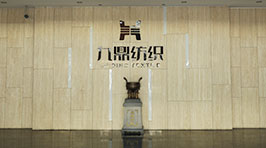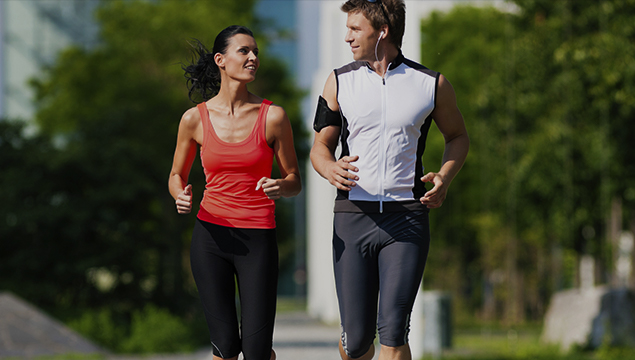
How can moisture-absorbing and quick-drying fabrics help improve performance during strength training?
1. Current status of sweating in fitness and limitations of traditional fabrics
In the gym, whether it is the frequent contraction and extension of muscles during strength training or participating in aerobics and other rhythmic exercises, the human body will produce a lot of sweat. In strength training, squats, bench presses, deadlifts and other movements require the coordinated force of muscles throughout the body, which accelerates metabolism and increases sweating. Aerobics are accompanied by fast rhythms and large-scale body movements, which will also make fitness enthusiasts sweat profusely. According to relevant studies, during a high-intensity fitness training, the average amount of sweat produced by the human body can reach 1-2 liters per hour.
Before the popularization of functional fabrics, fitness clothing made of traditional fabrics seemed to be unable to cope with such a large amount of sweat. Take the common pure cotton fabric as an example. Although it is skin-friendly and comfortable, it has too strong hygroscopicity. Once it absorbs sweat, it will become wet and stick tightly to the skin. This will not only cause a stuffy, sticky and uncomfortable feeling, but also seriously affect the performance of training movements. When doing strength training, wet clothes may cause slipping of hands, affect the grip of equipment, and increase the risk of exercise. When doing some large movements, wet clothes may also limit the stretching of the body and hinder the smoothness of the movement. Moreover, pure cotton fabrics dry slowly, and they are in a wet state for a long time, which is easy to breed bacteria and produce odors, affecting the mood and confidence of fitness people. Ordinary chemical fiber fabrics, such as polyester fiber fabrics, have extremely poor moisture absorption performance. During fitness, sweat cannot be absorbed by the fiber and can only stay on the surface of the clothes, forming a layer of wet "water film". This layer of "water film" not only cannot evaporate effectively, but also hinders the circulation of air between the clothes and the skin, exacerbating the stuffiness. People wearing polyester fiber fabric fitness clothing often feel hot and unbearable, and their skin is prone to itching, redness and swelling due to long-term contact with sweat, which seriously affects the fitness experience. The limitations of traditional fabrics in sweating during fitness exercises have made fitness enthusiasts eagerly look forward to the emergence of a new type of fabric that can effectively solve these problems.
2. The working principle of moisture-absorbing and quick-drying fabrics in fitness exercises
As the leader of functional fabrics, moisture-absorbing and quick-drying fabrics play a key role in fitness exercises. Its working principle is based on unique fiber design and advanced textile technology. This type of fabric usually uses synthetic fibers that have been specially modified, or new functional fibers. The surface of these fibers has a unique microstructure, some of which are grooved, and some have a large number of tiny pores. When fitness enthusiasts sweat during training, these special structures can quickly absorb sweat to the fiber surface like countless tiny straws. Through the gap channels formed by the clever arrangement and combination of fibers, sweat can be quickly conducted along the fibers to the outer layer of the fabric.
In terms of textile technology, moisture-absorbing and quick-drying fabrics use a special weaving method to further optimize the moisture conduction path. Some fabrics use a combination of tight weaving and loose weaving to provide a smooth channel for moisture conduction while ensuring the strength of the fabric. This special weaving process forms an efficient moisture transfer network inside the fabric, greatly speeding up the transfer of sweat from the skin surface to the outer layer of the fabric. The sweat that reaches the outer layer of the fabric can evaporate quickly due to the increased contact area with the outside air, so that the body of the fitness person can always keep dry. Compared with traditional fabrics, the moisture absorption rate of moisture-absorbing and quick-drying fabrics can be increased several times, and the evaporation rate is significantly accelerated, which effectively solves the problems of sweat accumulation and stuffiness during fitness.
3. The excellent performance of moisture-absorbing and quick-drying fabrics in different fitness projects
1. Strength training
In strength training, moisture-absorbing and quick-drying fabrics show incomparable advantages. Take the squat action as an example. When fitness people perform squats, their legs, buttocks and core muscle groups contract with all their strength, and they sweat a lot. Wearing fitness clothing made of moisture-absorbing and quick-drying fabrics, sweat can be quickly absorbed and conducted away, keeping the clothes dry. This not only makes fitness people feel comfortable during training, but also ensures that they have a stable grip on the equipment. A fitness enthusiast who often does strength training shared: "In the past, when I did squats, I always sweated and my clothes were very slippery after being soaked, and I couldn't hold the barbell steadily. Now I wear clothes made of moisture-absorbing and quick-drying fabrics, and this problem is completely solved. My body is very dry during training, my movements are more standard, and I can lift heavier weights." The same is true in bench press training. Fitness enthusiasts lie flat on the bench press bench, and sweat will flow down their bodies by exerting force on their chest, shoulders and arm muscles. Moisture-absorbing and quick-drying fabrics can quickly absorb this sweat, preventing sweat from dripping into the eyes and affecting vision, and also preventing the friction between the body and the bench from being reduced due to damp clothes, affecting the training effect. A fitness coach said: "When guiding students to do strength training, I found that students wearing clothes made of moisture-absorbing and quick-drying fabrics are in significantly better training conditions. Their movements are more stable and the risk of injury is reduced." 2. Aerobics Aerobics is a dynamic fitness project that requires extremely high flexibility and comfort of clothing. In aerobics training, fitness people need to follow the rhythm of music to make various fast and large movements. Clothing made of moisture-absorbing and quick-drying fabrics can perfectly meet the needs of this kind of exercise. Due to the moisture-absorbing and quick-drying properties of the fabric, during the process of jumping, turning, stretching and other movements, sweat can be absorbed and evaporated in time, and there will be no sense of restraint due to sweat accumulation. Clothing can follow the rhythm of the body, allowing fitness people to enjoy the joy of exercise. When doing aerobics, fitness people need to swing their arms frequently and turn their bodies quickly. Clothing made of moisture-absorbing and quick-drying fabrics can quickly absorb sweat from the arms and other parts of the body, keep the clothes dry, and will not hinder the movement due to damp clothes. An aerobics enthusiast said: "In the past, when I was doing aerobics, my clothes would get soaked after a while, which made me feel very uncomfortable, and I couldn't move freely. Now I wear clothes made of moisture-absorbing and quick-drying fabrics, and the whole exercise process is very refreshing. I can devote myself to the dance movements, which feels great."











 中文简体
中文简体 English
English Español
Español русский
русский













